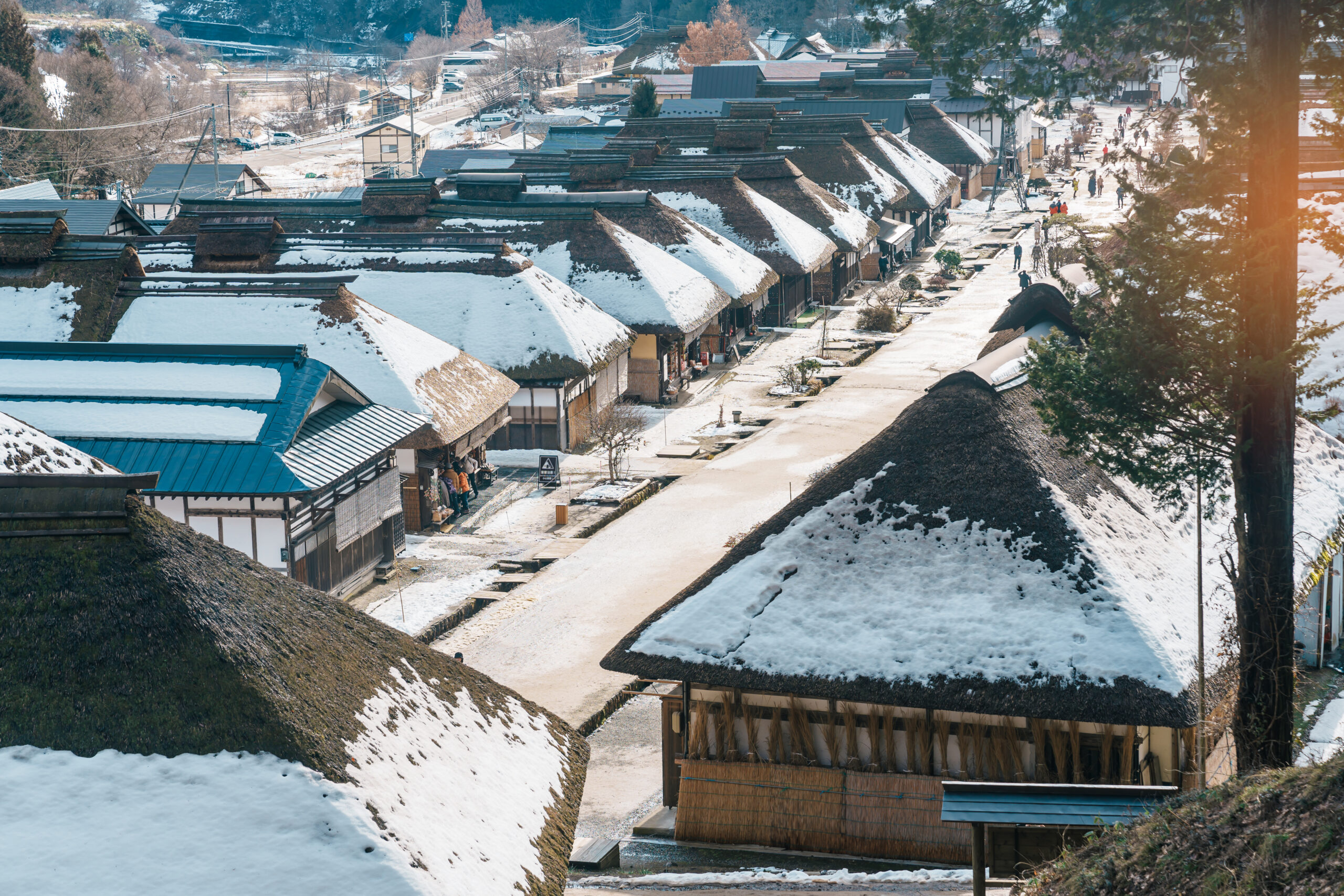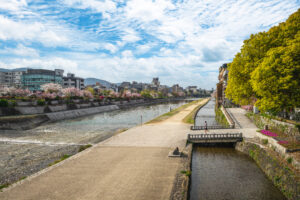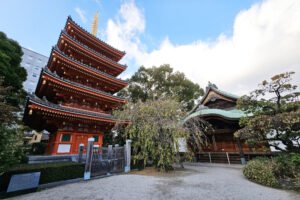The Aizu-Nishi Kaido trade route, a historical pathway in Japan, is drawing renewed interest as scholars, historians, and local communities seek to revive its significance. As an ancient artery of commerce, the Aizu-Nishi Kaido not only facilitated trade but also fostered cultural exchanges and shaped the social landscape of the regions it connected. In this article, we explore the rich history, cultural relevance, and the ongoing efforts to revitalize this important trade route.
Reviving History: The Aizu-Nishi Kaido Trade Route Unveiled
The Aizu-Nishi Kaido trade route, which once played a pivotal role in Japan’s economic and cultural development, is now the focus of revival efforts aimed at restoring its historical significance. Stretching from Aizu to the west, this route allowed merchants, travelers, and goods to flow between regions, thus stimulating local economies and creating interregional bonds. As modern infrastructure continues to evolve, there is a growing recognition of the importance of preserving and celebrating historical trade routes, such as the Aizu-Nishi Kaido.
In recent years, local governments and historical societies have launched initiatives to promote the Aizu-Nishi Kaido as a site of cultural heritage. These efforts include the restoration of ancient pathways, the installation of informational signage, and the organization of guided tours that emphasize the route’s historical importance. Community members are actively participating in these endeavors, reflecting a collective commitment to honoring their shared history.
Furthermore, the revival of the Aizu-Nishi Kaido trade route aligns with broader trends in tourism, where travelers are increasingly seeking authentic experiences that connect them to the past. By reopening this historical pathway, the region aims to attract visitors interested in exploring the cultural and economic legacies of ancient trade routes.
The revival process is not without its challenges, as balancing modernization with preservation requires careful planning and community involvement. However, stakeholders are optimistic that by leveraging local resources and expertise, the Aizu-Nishi Kaido can be reintegrated into contemporary society while honoring its past.
The enthusiasm surrounding the revival of the Aizu-Nishi Kaido highlights a growing awareness of the importance of historical narratives in shaping local identity. As communities rediscover their roots, they are empowered to share their stories and heritage with future generations, ensuring that the lessons of the past are not forgotten.
Ultimately, the revival of the Aizu-Nishi Kaido trade route serves as a reminder of the dynamic interplay between history, culture, and commerce. As the region embarks on this journey of rediscovery, the Aizu-Nishi Kaido stands ready to unveil its secrets and share its rich legacy with the world.
Unearthing the Secrets of the Aizu-Nishi Kaido Route
The Aizu-Nishi Kaido trade route was more than just a means of transportation; it was a network of exchanges that shaped the lives of those who lived along its path. Archaeological studies along the route have revealed remnants of inns, markets, and other structures that once thrived due to the trade activities. These findings point to a vibrant commercial atmosphere that characterized the route during its peak.
One of the intriguing aspects of the Aizu-Nishi Kaido is its ability to connect diverse cultures and communities. The trade route served as a conduit for not only goods but also ideas and customs. As merchants traveled between regions, they brought with them new technologies, culinary practices, and artistic styles, fostering a rich tapestry of cultural exchange.
Research into historical texts and records has also shed light on the key players in the trade network. Merchants and local leaders played significant roles in establishing trade agreements and fostering relationships that allowed commerce to flourish. These figures are often celebrated in local histories, providing a glimpse into the individuals who shaped the economic landscape.
In addition to physical artifacts, oral histories from local residents have contributed to the understanding of the Aizu-Nishi Kaido’s significance. Elders recount tales of family businesses that thrived thanks to the trade route, highlighting its impact on community structures and livelihoods. These narratives serve to reinforce the cultural identity of the region.
As researchers continue to excavate the layers of history surrounding the Aizu-Nishi Kaido, more secrets are likely to be uncovered. Each discovery offers valuable insight into the complexities of historical trade and the multifaceted interactions that defined the area. The ongoing investigations not only contribute to academic knowledge but also inspire local pride in the region’s history.
Ultimately, the unearthing of secrets along the Aizu-Nishi Kaido route serves as a reminder of the importance of understanding our past. By piecing together the stories and artifacts associated with the trade route, communities can foster a deeper appreciation for their heritage and its relevance in a modern context.
The Historical Significance of Aizu-Nishi Kaido Trade
The Aizu-Nishi Kaido trade route is an emblematic representation of Japan’s feudal era, a period when regional lords (daimyos) exerted control over trade and commerce. The route facilitated the movement of goods such as agricultural products, textiles, and crafts, which were crucial to the local economies. The economic vitality of the Aizu region depended heavily on this trade network, making it a cornerstone of prosperity.
Historically, the Aizu-Nishi Kaido served as a vital supply line during periods of conflict and unrest. The route enabled the transportation of rice and other essential goods, which were critical during times of war or famine. The strategic importance of the trade route can be traced back to Japan’s civil wars, where control over trade networks often dictated the outcomes of battles.
The significance of the Aizu-Nishi Kaido is also evident in its role as a cultural bridge. The trade route allowed for the exchange of artistic traditions, leading to the development of unique regional styles in ceramics, textiles, and architecture. This cultural diffusion enriched the local heritage, leading to a diverse and vibrant community identity.
Moreover, the historical narratives surrounding the Aizu-Nishi Kaido reflect the interconnectedness of various regions in Japan. The trade route demonstrated that commerce was not just about the exchange of goods but also about building relationships and fostering mutual understanding among different communities. This interconnectedness remains a relevant theme in modern discussions about globalization and trade.
The documentation of the Aizu-Nishi Kaido’s historical significance has been bolstered by the efforts of historians and cultural preservationists. Their research has illuminated the route’s impact on the socio-political landscape of Japan, revealing how trade influenced power dynamics and governance during the feudal era.
In summary, the Aizu-Nishi Kaido trade route is a historical testament to the complexity of Japan’s economic and cultural development. Its legacy continues to influence contemporary society, providing valuable lessons about the importance of trade, community, and cultural exchange.
Discovering the Economic Impact of Ancient Trade Routes
Ancient trade routes like the Aizu-Nishi Kaido were instrumental in shaping the economic framework of regional communities. By facilitating the exchange of goods, these routes contributed to the growth of local economies, allowing merchants to capitalize on the demand for specific commodities. The economic impact of the Aizu-Nishi Kaido can be seen in the proliferation of marketplaces and the rise of merchant classes along its path.
One of the primary commodities traded along the Aizu-Nishi Kaido was rice, which served as the backbone of the Japanese economy during the feudal period. The transport of rice not only supported local populations but also generated wealth for traders and landowners. This economic activity fostered a sense of community, as merchants collaborated to ensure the efficient movement of goods.
The Aizu-Nishi Kaido also played a role in the distribution of luxury items, including textiles and crafts. By connecting artisans with broader markets, the trade route facilitated the exchange of cultural products that defined the region’s identity. This exchange was crucial for stimulating innovation and craft development, as artisans adapted their techniques to meet market demands.
Furthermore, the economic ramifications of the Aizu-Nishi Kaido extended beyond immediate trade benefits. The route contributed to the establishment of infrastructure such as inns and rest stops, which supported long-distance travel. This infrastructure not only improved trade efficiency but also enhanced regional connectivity, promoting economic growth in the surrounding areas.
In modern times, the economic legacy of the Aizu-Nishi Kaido continues to resonate. Local businesses are beginning to reconnect with their historical roots, exploring avenues to market goods inspired by traditional crafts and practices. As communities seek to capitalize on the revival of the trade route, there is potential for economic growth driven by heritage tourism and cultural engagement.
Ultimately, the economic impact of the Aizu-Nishi Kaido underscores the importance of understanding historical trade routes as catalysts for growth, collaboration, and innovation. The lessons gleaned from the past can serve as a guide for contemporary economic strategies, emphasizing the value of community, culture, and commerce.
Aizu-Nishi Kaido: Connecting Regions Through Commerce
The Aizu-Nishi Kaido trade route served as a vital link between various regions in Japan, facilitating commerce and interaction among disparate communities. Its strategic location allowed merchants to traverse the landscape, connecting rural areas with urban centers. This interconnectivity fostered economic relationships that contributed to the prosperity of the regions involved.
Through the Aizu-Nishi Kaido, local producers could access broader markets for their goods. Farmers, artisans, and traders capitalized on the route to sell their products, thus stimulating local economies. The ability to transport goods efficiently was crucial for ensuring that surplus agricultural production reached urban markets, where demand was higher.
Additionally, the trade route was key for the distribution of goods from the Aizu region to neighboring areas. The movement of textiles, pottery, and other crafts played a significant role in establishing Aizu’s cultural identity. The commerce that flourished along the route allowed local artisans to gain recognition and develop their crafts, contributing to the region’s reputation.
The Aizu-Nishi Kaido also fostered a sense of community among merchants and travelers. Innkeepers and local residents benefited from the influx of visitors, creating a shared culture of hospitality that further enriched the trade experience. This sense of connection was not solely economic but social, as people from various backgrounds interacted and exchanged ideas.
The historical ties established through the Aizu-Nishi Kaido have left an indelible mark on local traditions and practices. Festivals, markets, and cultural events often reflect the region’s commercial history, celebrating the shared heritage that arose from centuries of trade. This cultural continuity is a testament to the enduring impact of the Aizu-Nishi Kaido.
In conclusion, the Aizu-Nishi Kaido trade route exemplifies the interconnectedness of regions through commerce. By facilitating the movement of goods and fostering relationships, the route played a crucial role in shaping the economic landscape of Japan. Its legacy continues to inspire modern initiatives aimed at preserving and promoting regional connections.
Cultural Exchange Along the Aizu-Nishi Kaido Route
The cultural exchange facilitated by the Aizu-Nishi Kaido trade route is one of its most enriching aspects. As merchants traveled along this route, they carried not only goods but also ideas, beliefs, and customs. This exchange played a significant role in shaping the cultural identity of the regions connected by the trade route.
Artistic traditions flourished along the Aizu-Nishi Kaido, as artisans shared techniques and styles with one another. The incorporation of new materials and methods led to the evolution of local crafts, resulting in unique products that reflected the cultural influences of various regions. This artistic dialogue enriched the cultural landscape of Aizu and its neighboring areas.
Moreover, the trade route facilitated the dissemination of culinary traditions. As different regions shared their food practices, the Aizu-Nishi Kaido became a conduit for culinary exchange. Dishes that originated from one area were adapted and integrated into the local cuisine of others, leading to a diverse culinary heritage. Festivals celebrating local foods often draw inspiration from this rich historical tapestry.
The Aizu-Nishi Kaido also played a role in the spread of religious and philosophical beliefs. As traders and travelers moved along the route, they brought with them ideas from different schools of thought. This exchange enriched the spiritual lives of local communities, fostering a sense of shared belief and understanding among diverse groups.
The cultural interactions that took place along the Aizu-Nishi Kaido have left a lasting legacy in the form of traditions, festivals, and customs. Many local celebrations pay homage to the route’s historical significance, incorporating elements that reflect the cultural melding that occurred over centuries. These traditions serve as a reminder of the importance of community and collaboration in shaping cultural identity.
In summary, the Aizu-Nishi Kaido trade route was a vital conduit for cultural exchange, allowing ideas, art, and culinary practices to flourish. The connections forged through commerce and travel have left a profound impact on the cultural heritage of the regions involved, enriching the tapestry of Japanese history.
Modern Initiatives to Preserve Historical Trade Paths
In recent years, there has been a growing movement to preserve historical trade paths like the Aizu-Nishi Kaido. Local governments, non-profit organizations, and community groups are coming together to safeguard the historical integrity of these routes while promoting their cultural significance. This collaborative effort reflects a commitment to preserving heritage in the face of modernization.
One of the primary initiatives has been the restoration of the physical infrastructure along the Aizu-Nishi Kaido. Efforts include repairing ancient pathways, reconstructing historical landmarks, and installing informative signage that highlights the route’s significance. These restoration projects not only enhance accessibility for visitors but also help to educate the public about the history of the trade route.
Community engagement plays a crucial role in these preservation efforts. Local residents, historians, and cultural advocates are actively involved in initiatives that promote awareness and appreciation for the Aizu-Nishi Kaido. By organizing events such as guided tours, workshops, and cultural festivals, these stakeholders foster a sense of pride in the region’s heritage.
Additionally, collaboration with educational institutions has proven beneficial. Schools and universities are often involved in research projects that aim to document and interpret the history of the Aizu-Nishi Kaido. By integrating local history into educational curricula, younger generations are encouraged to explore and appreciate their cultural roots.
Modern technology is also being leveraged to enhance preservation efforts. Digital mapping projects and virtual reality experiences allow individuals to engage with the Aizu-Nishi Kaido in innovative ways. These technological advancements not only attract younger audiences but also provide new platforms for sharing the route’s history and significance.
Ultimately, the modern initiatives to preserve the Aizu-Nishi Kaido reflect a collective commitment to honoring the past while adapting to contemporary needs. As communities work together to safeguard their heritage, they lay the groundwork for future generations to appreciate the rich history of the trade route.
How Aizu-Nishi Kaido Influenced Local Communities
The Aizu-Nishi Kaido trade route had a profound influence on the local communities along its path. By facilitating the movement of goods and ideas, the route helped to shape the social and economic structures of these communities. As trade flourished, it fostered a sense of interconnectedness and collective identity among residents.
Economically, the trade route enabled local producers to access broader markets, allowing them to sell their goods beyond their immediate communities. Farmers and artisans benefited from the increased demand for their products, leading to enhanced livelihoods and the growth of local economies. This economic prosperity often translated into improvements in infrastructure and public services.
Socially, the Aizu-Nishi Kaido served as a meeting point for diverse groups of people. Merchants, travelers, and residents interacted along the route, leading to the exchange of ideas and cultural practices. This interaction fostered a sense of community, as individuals from different backgrounds shared their stories, traditions, and knowledge.
Cultural exchange along the Aizu-Nishi Kaido also had lasting effects on local customs and practices. Festivals and celebrations often reflect the region’s trading history, incorporating elements from various cultures that were influenced by the trade route. These events serve as a reminder of the shared heritage that emerged from centuries of commerce and collaboration.
Additionally, the Aizu-Nishi Kaido played a role in shaping local governance. As trade flourished, regional leaders recognized the importance of maintaining the route and ensuring its security. This recognition often led to the establishment of regulations and policies that promoted trade while also fostering community welfare.
In summary, the influence of the Aizu-Nishi Kaido on local communities was multifaceted. By facilitating trade and cultural exchange, the route contributed to economic prosperity, social cohesion, and cultural diversity. Its legacy continues to be felt today as communities work to honor and revitalize their historical connections.
The Role of Aizu-Nishi Kaido in Japanese History
The Aizu-Nishi Kaido trade route occupies a significant place in Japanese history, serving as a testament to the complexities of commerce, culture, and community. Its historical relevance extends beyond its function as a trade pathway; it played a pivotal role in shaping the social and economic landscape of the regions it connected.
During the feudal era, the Aizu-Nishi Kaido was essential for the movement of goods and resources, particularly rice, which was the backbone of the Japanese economy. The route facilitated trade among regional lords (daimyos) and their vassals, allowing them to strengthen their economic power and influence. The control of trade routes often dictated political alliances and rivalries, making the Aizu-Nishi Kaido a strategic asset in the struggle for power.
The trade route also played a prominent role during times of conflict. When war broke out, the Aizu-Nishi Kaido became a vital supply line for transporting essential goods to support military campaigns. The ability to move resources efficiently along this route often determined the outcomes of battles and the fates of feudal lords.
Culturally, the Aizu-Nishi Kaido contributed to the dissemination of artistic traditions and practices across regions. As merchants traveled the route, they exchanged not only goods but also ideas and techniques, enriching the cultural heritage of the areas involved. This cultural diffusion is evident in the diverse artistic styles and culinary practices that emerged from the communities along the route.
The Aizu-Nishi Kaido also served as a platform for social interaction and collaboration among different communities. As traders and travelers connected along this pathway, they fostered relationships that transcended regional boundaries. This interconnectedness contributed to a sense of shared identity and mutual understanding, which remains relevant in modern discussions about community and cooperation.
In conclusion, the Aizu-Nishi Kaido trade route holds a prominent place in Japanese history, reflecting the intricate relationships between commerce, culture, and community. Its legacy continues to influence contemporary society, reminding us of the importance of historical narratives in shaping our understanding of the past.
Revitalizing Aizu-Nishi Kaido: A Community Effort
The revitalization of the Aizu-Nishi Kaido trade route has emerged as a community-driven effort that underscores the importance of local involvement in preserving heritage. Residents, historians, and local organizations are actively collaborating to breathe new life into the historical pathway, recognizing its cultural significance and potential for community engagement.
One of the key components of this revitalization effort is the restoration of the physical infrastructure along the Aizu-Nishi Kaido. Community members have come together to repair ancient pathways, build informational kiosks, and create markers that highlight historical landmarks. These restoration projects not only enhance accessibility but also foster a sense of ownership among residents.
Educational initiatives are also central to the revitalization efforts. Local schools and community centers are organizing workshops and programs that educate residents about the history of the Aizu-Nishi Kaido. By integrating local history into educational curricula, younger generations are encouraged to explore and appreciate their cultural roots, ensuring that the legacy of the trade route is passed down.
Cultural events and festivals celebrating the Aizu-Nishi Kaido are gaining traction as well. These gatherings provide opportunities for community members to come together and celebrate their shared heritage. Activities often include traditional performances, craft demonstrations, and local food tastings, all of which reinforce the connections between past and present.
Social media and digital platforms are being utilized to engage a broader audience in the revitalization efforts. By sharing stories, photographs, and historical information online, community members can raise awareness about the Aizu-Nishi Kaido and its significance








